This is a classic UK wet fly for stillwaters. Good looking, easy to find materials, easy to tie. Why not tie it for the Baltic sea runs?
I recently added a Davie McPhail video showing how to tie a Hutch's Pennell. I have to say that I liked that fly! A lot!
It's essentially a Black Pennell on steroids. Not strong steroids, but still.
The Black Pennell is a traditional English wet fly. The pattern was originated by Henry Cholmondeley Pennel who lived 1837-1913 and was an English poet and author, who wrote extensively on fishing and other sports.
The Black Pennell
does live up to its name. It's mainly black: a black body and hackle, accented by a silver tag, a silver rib and not least a golden pheasant tippet tail.
The Black Pennell was a part of a series also listing the Yellow Pennell (yellow silk body), The Green Pennell (green silk body), the Red Pennell (red wool body) and even the Claret Pennell (claret yarn body). Some sources also prescribe a wing, and crow is mentioned as a material. In its early incarnation it was most likely tied as a traditional wet fly with a stylish feather wing.
The fly is sometimes tied as an “Irish Black Pennell“, bushy like a Zulu or other UK lake flies. It's sometimes tied skinnier like a traditional wet fly, and sometimes even tied in a spider style with a very slim body and an extremely sparse hackle. You will also see Black Pennells tied on larger hooks, like a double salmon hook, which makes it a fine salmon or sea trout fly for larger rivers.
Most modern versions omit the wing and let the hackle be sparse. The resulting pattern is simple and efficient.
The Pennell Family
Some members of the large Pennell Family - and the humble Red tag
Hutch's Pennell
comes from the British island Orkney where an angler named Ian Hutcheon, who seems to be pretty famous in those parts, has bettered the Black Pennell by adding a bit of sparkle and contrast to it in the form of a silver tag, a peacock herl body and a white hackle along with the black already found on the black version.
The fly immediately appealed to me, and the version tied by McPhail looked very good, and sparked the idea of tying a version for Baltic sea trout. It wouldn't take much else than a larger hook and little more of each material, and the result would definitely be a potential winner in my home waters.
Hutcheon even expanded the Hutch's Pennell concept and made a Hot Spot Hutch's Pennell where the tag is supplemented with a bright butt of colorful yarn or dubbing. Also a fly that could work here – maybe even better if the green butt was exchanged with an orange or pink one.
Kasper Mühlbach
As I researched the fly, I even stumbled over a Muddled Hutch's Pennell also referred to as a Hutch's Pennell Muddler. Hey! A good looking fly AND a muddler. What's not to like?
So I sat down at the vise and cranked out a few Hutch's Pennell's for this spring's sea trout fishing.
Tying instructions
Click on the images and navigate through them to get detailed step-by-step instructions.
|
|
|
|
|
|
|
|
|
|
|
|
|
|
|
|
|
|
|
|
|
|
|
|
|
|
|
|
|
|
|
|
|
|
|
|
|
|
|
|
|
|
|
|
|
|
|
|
The Black Pennell
is a pretty simple fly with a tippet tail, a silver ribbed black body and a black hackle. Hutcheon's variation adds a silver tag and uses herl as mentioned, and finishes the fly with a white hackle over the black.
For it to become a Hot Spot Hutch's Pennell, you add a brightly colored hot spot - a butt - in the rear of the body, and if you want to muddle it, you replace the white hackle with a sparse, spun collar of light deer hair.
I also tied
a Dull Hutch's Pennell where I used dull brown and cream soft hackle in stead of black and white, which led the fly to come very close to look like one of my all time favorite flies for coastal sea trout: the Red Tag, which I have had great success with on my homely coasts, especially when the water is calm and clear. The Hutch's Pennell could easily become a stand in for the the Red Tag on days with a little less light and maybe a bit of color in the water.
- Log in to post comments






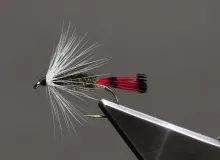







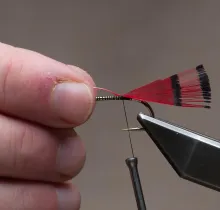

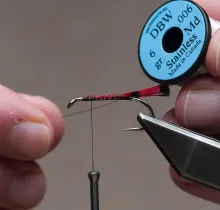






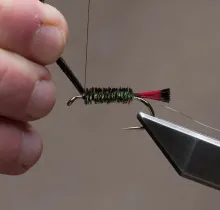










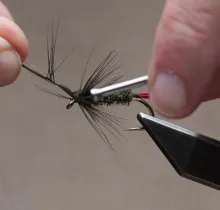


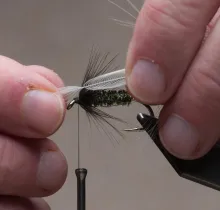
















Here in the USA
I use alot of UK patterns such as these, Red Tags, Ke-he's, Corixas and all their many, many variations for bass and bream here in Western PA. They work incredibly well, are beautiful to tie and give me valid reasons to buy more materials and tie different patterns! haha